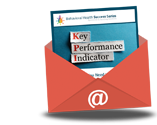
14 Nov The State of Mental Health in America 2023: Youth Prevalence and Access to Care
Parents, researchers, and front-line mental health providers are all saying the same thing: there is an ongoing mental health crisis among youth in America. Taking action to mitigate these challenges is essential. However, it can be hard to know where to start without the appropriate data.
Thankfully, organizations like Mental Health America (MHA) are committed to providing this information through resources like their annual State of Mental Health in America report. The 2023 version of the report was recently released, providing valuable insights that clinicians can use to better understand the national prevalence of youth mental health issues. (You can read a summary of the adult findings here.)
Because we know having better information leads to improved treatment outcomes, it’s important to analyze the report to understand the prevalence of pediatric mental illness and how readily they can access mental health care services.
A note about the 2023 data: As with previous reports, there is a lag between data collection and published findings. The information presented in the 2023 survey was collected in 2020 and is the first iteration of the report with data cumulated during the COVID-19 pandemic. As a result of limitations on data collection efforts imposed by the pandemic, as well as changes and updates to the DSM-IV, the authors of the survey stress that figures from the 2023 survey cannot accurately be compared to data from previous years.
Key Takeaways
- 16% of youth surveyed reported having at least one major depressive episode in the past year.
- More than 2.7 million children and adolescents are living with severe major depression.
- 60% of youth with major depression receive no mental health treatment.
- States with the poorest pediatric mental health rankings include Oregon, Kansas, Nebraska, and Virginia. These states also have some of the highest percentages of children experiencing at least one major depressive episode and/or substance use disorder.
- Over 6% of youth surveyed reported having a substance use disorder in the past year. Of that number, 2.85% reported using alcohol, and 4.85% reported using illicit drugs.
- 1 in 10 children covered under private insurance cannot access care for mental or emotional difficulties through their insurance.
Current Trends in Youth Mental Health
While it’s not possible to compare the numbers from the 2023 survey to data from previous years, the findings support what many other organizations have been saying for years: the prevalence of mental health concerns among young people is rising. And the rise is dramatic.
Unfortunately, the growing prevalence of pediatric mental health concerns has been coupled with low mental health workforce availability. In the United States today, there is just one available mental health provider for every 350 people.
In some states, that ratio increases dramatically. Alabama has 1 provider for every 850 people, and in West Virginia, there is only 1 provider for every 670 people.
This has made it challenging to get effective treatment, especially for children from lower-income families. Leaving issues like depression and anxiety untreated is extremely detrimental, and has been linked to problems like substance use, unemployment, homelessness, and even suicide. Because untreated issues in childhood and adolescence can impact lifelong health, the urgency for finding treatment options for our youngest population is paramount.
Here are some of the most significant concerns that survey authors identified based on the 2023 data.
Rates of Depression and Anxiety are Increasing Dramatically
Severe depression impacts every area of a young person’s life, including school, work, family, home life, and friendships.
Rates of serious mental health concerns like depression and anxiety have risen appreciably among youth over the last several years. Even before the pandemic, this occurrence was observed, with one study finding a 27% increase in anxiety and a 24% increase in depression between 2016 and 2019.
This year, the 2023 MHA survey found that 11.5% of youth reported severe major depression. Of that number, there were profound disparities observed by race and geography. For example, almost 20% of youth in South Dakota reported severe major depression, while only 5.20% did in South Carolina. Children and adolescents who identify as two or more races exhibited the highest prevalence of depression, which was 16.5% of those surveyed.
Accessing Care is Difficult, Even with Private Insurance
Access to care for those with mental health concerns has been shown to help improve their quality of life and mitigate symptoms. Unfortunately, many young people are unable to access the care they need.
Almost 60% of youth who reported at least one major depressive episode a year did not receive any treatment. In some states like Kentucky, Hawaii, and South Carolina, that number skyrockets to between 75% and 80%. Only 28% of youth diagnosed with serious depression received any treatment whatsoever.
There are many reasons for the lack of treatment. The ongoing stigma of mental healthcare, a lack of knowledge of where to go for care, inadequate insurance, and financial issues are all driving factors. Nationally, 1 in 10 youth with private insurance cannot receive coverage for mental or emotional difficulties, either because they have plans that do not cover these healthcare services, or because care remains inaccessible for other reasons.
Mental Health Concerns in Public Schools are Not Adequately Supported
Children with mental health concerns in the public school system are not being adequately supported. In the educational system throughout most of the United States, “emotional disturbance” (ED) is the term used to refer to youth who have a mental or behavioral health condition that impacts their learning. If a child receives this designation, they are eligible for an Individual Education Program (IEP), a customized program of goals and support services that can help them thrive in traditional education.
While many children exhibit symptoms of depression and anxiety, only 0.718% of the surveyed students in grades K-12 have been identified as having an emotional disturbance on their IEP. To further compound the issue, many schools cannot adequately support children with mental health conditions. This has led to almost four times more disciplinary removals for students with emotional disturbances compared to the overall student population.
Students with an ED on their IEP were also more likely to live below the poverty level and reported experiencing trauma. Schools that have invested in social services and programs focused on restorative justice have been able to offer improved behavioral and educational outcomes, especially for youth who have experienced trauma.
Variations by State
While it’s true that youth around the country are struggling, there are still areas where disparities based on race, geography, and socioeconomic status emerge.
In general, states with a low workforce availability of mental health professionals also tended to have high rates of youth with major depressive episodes who did not receive care. Accessibility of care for youth with depression was lowest in South Carolina, Texas, and West Virginia. These states are also within the bottom ten states for mental health workforce availability.
These circumstances can be mitigated for children and adolescents by improving mental health workforce availability through enhanced reimbursement. Additionally, children would be able to improve their access to care if more treatments or providers are covered under their private insurance. Children and adolescents with major depressive episodes whose insurance covered mental health treatments were 11.1% more likely to receive care.
Closing Thoughts
For youth, as with adults, it’s clear that having access to more mental and behavioral health clinicians leads to better care and improved outcomes across the board. It will allow children to have more energy, focus, and satisfaction in their personal lives, in school, and at home with their families.
For clinicians already working in this field, this data gives us a sense of the areas that need improvement. For example, if you’re working in one of the states with low workforce availability, you could lead outreach programs to new clinicians or make it easier for youth in your area to reach out with questions.
Seeing how fiercely children and adolescents are struggling helps reinforce the value of your work and hopefully encourages clinicians to continue to provide hands-on services for young people in their area.
If not now, when?
The demand for mental health treatment is forecasted to remain very high for the foreseeable future. If you’re stretched thin for resources as you try to accommodate more patients who need care, consider using a behavioral health-specific EHR to help manage your everyday workflows. Contact us today to learn how NextStep Solutions tools and technology have helped others in the behavioral health community thrive.



Sorry, the comment form is closed at this time.